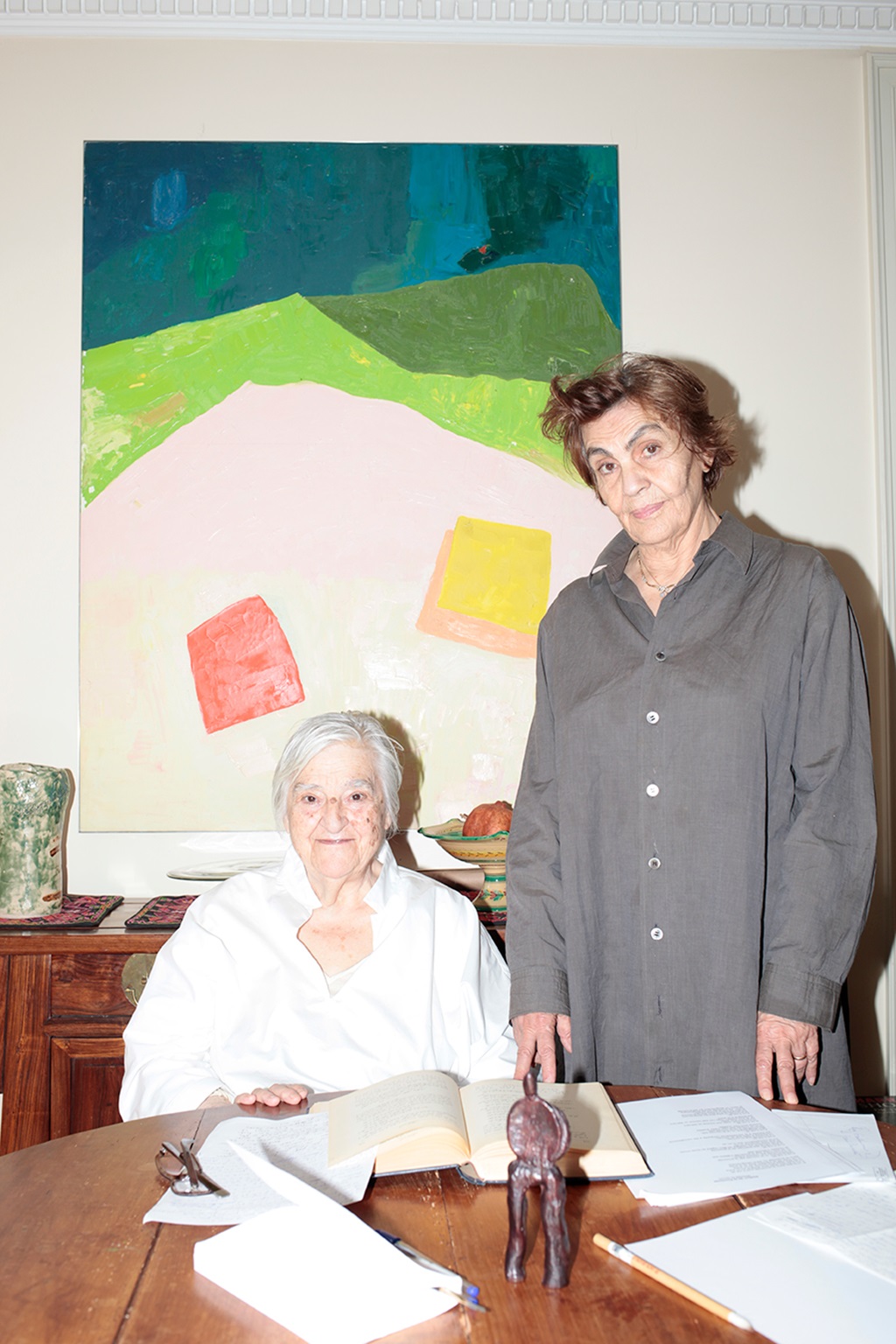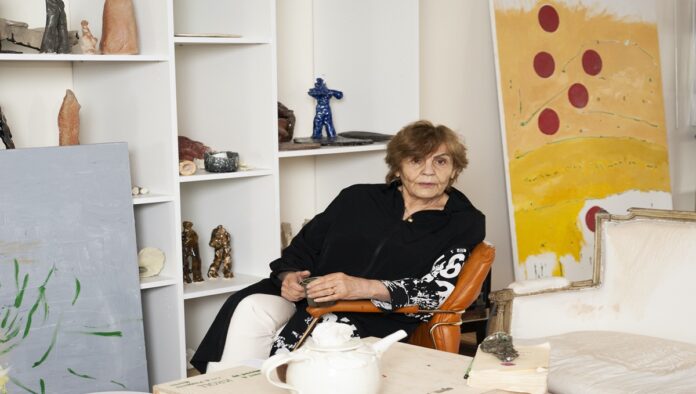Etel Adnan’s work has finally been appreciated worldwide. The late writer and painter of luminous landscapes has been honored with the Google Doodle.
The late artist was always supported by her partner Simone Fattal. She was one of the figures who always pushed her boundaries despite her age.
Key Takeaways
- Simone Fattal is currently living and working in Paris after losing her partner, Etel Adnan.
- Simone Fattal’s partner, Etel Adnan, is featured in Google Doodle, appreciating the art and the legacy she left.
- Simone and Etel first met each other in 1972.
Etel Adnan might be the perfect example of the saying, People Go, But Their Legacy And Art Remain Forever.
On March 15, Google paid tribute to the late artist, poet, and author Etel Adnan by creating Google doodles for her.
People also say that due to her mixed Lebanese and American, she used to craft art that most people didn’t even think about.
With her profound philosophical insights, she has left an everlasting impact on the world of visual arts.
Moreover, her partner Simone was there to help her every step of her career as she was also an artist by profession.
Etel Adnan Husband And Partner Simone Fattal Is Also An Artist
Simone Fattal ( Arabic:سيمون فتال) was born in 1942 in Damascus, Syria. However, she did her education in Beirut and Paris.
She did her philosophy at The University of Paris, known metonymically as the Sorbonne.
Then, she returned to Beirut in 1969, where she started her professional journey as a painter.
Simone started working in clay art at The Art Institute of California, and with the experience she gained, she started working with ceramic artist Hans Spinner in Grasse.
Simone Fattal Shares the Hardest Part of Being an Artist, and Why It’s Worth It to Keep Fighting https://t.co/Pnj2NmVSgU
— Cristóbal Galicia Art Advisory (@cgartadvisory) February 8, 2024
Over her over five decades as an artist, her art has been appreciated in different corners of the world. In 2017, she was nominated for the AWARE prize for women artists.
Similarly, in 2019, the Museum of Modern Art’s MoMa PS1 presented a retrospective of her work “Works and Days.”
However, her work has also been exhibited at the Yves Saint Laurent Museum in Marrakesh, the Sharjah Art Foundation, and the Rochechouart Museum of Contemporary Art.
Then, in 2021, Simone assisted in an exhibition of Etel Adnan’s work with Serhan Ada at the Pera Museum in Istanbul.
One of her works, “Finding a Way,” was included in an exhibition and viewed in London between 21 September 2021 and 15 May 2022.
Etel Adnan And Simone Fattal Were Together For Over 50 Years
The late Lebanese-American poet, essayist, and visual artist Etel Adnan and Lebanese American painter and sculptor first met each other in the 1970s in Beirut when Etel came to Beirut to be the culture editor at a Lebanese newspaper.
After nearly spending and working seven years there, the love couple moved to Sausalito, California, in 1997.
Simone and Etel had their first show together in 1973 called Gallery One, where Simone made a painting around Etel’s poem “Five Senses for One Death.”
Then, in 1982, Simone founded the Post-Apollo Press, where she published Etel’s poem “From A to Z ” and Etel’s award-winning novel about the Lebanese civil war named “Sitte Marie Rose.”

The couple were together for five decades. In 2016, they used to live in an apartment in Paris’s Latin Quarter.
Before moving to the apartment, the duo used to own a house in California. In an interview she told how hard it was for them to live. She said,
it was horrible. the hardest thing. we bought that house in 1980 and lived there for 30 years, so its been a whole life.
After her partner’s demise, Etel Adnan, she now lives and works in Paris.
FAQ’s
What are some of Simone Fattal’s career highlights?
In 2024, Simone Fattal received both the Julio Gonzalez International Prize and the Berlin Grand Art Prize, which is rare for an artist to get.
What movement did Simone Fattal make to defend the art culture?
Simone was also part of the Hurufiyya movement, a literary movement that emerged in the second half of the twentieth century among atheists from Muslim countries.

